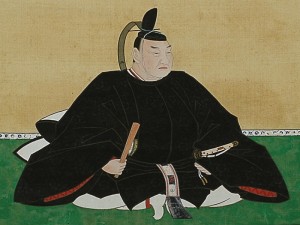This year is the 200th anniversary of the birth of Ii Naosuke, who as the shogun’s regent was the most powerful man in Japan. It is also the 155th anniversary of his assassination. He was cut down in broad daylight at Sakurada Gate, a main entrance to the shogun’s castle on an unseasonably snowy morning in spring 1860. It was the most brazen offense ever committed against the Tokugawa Shogunate and the most politically significant assassination of an era plagued with assassination and bloodshed. The shogunate collapsed around eight years after the so-called Incident Outside Sakurada Gate.

This image of Ii Naosuke is from “The 200th Year Celebration of the Birth of Lord Ii Naosuke.”
“I cannot help but wonder who, if anyone, at the time realized the severe mental agony the regent was going through,” recalled Katsu Kaishu regarding Ii Naosuke’s mental state during the series of events surrounding the shogun’s successor and Japan’s first foreign trade treaties that resulted in Naosuke’s assassination. Kaishu was “the shogun’s last samurai” of my recent book Samurai Revolution, in which I have written about those events in detail.
For updates about new content, connect with me on Facebook.
For more on Ii Naosuke and Katsu Kaishu, see Samurai Revolution, a comprehensive history of the fall of the Tokugawa Shogunate.

